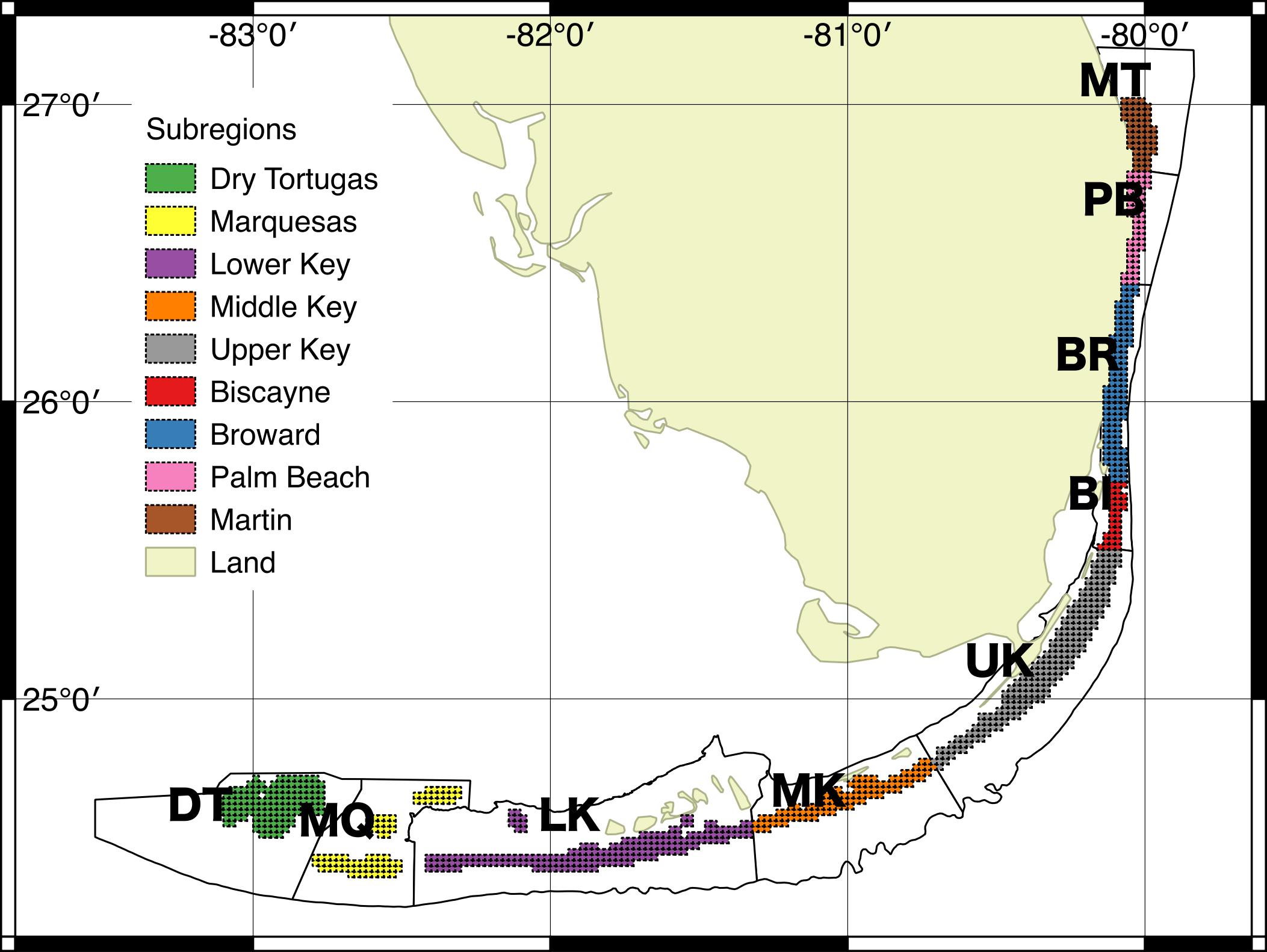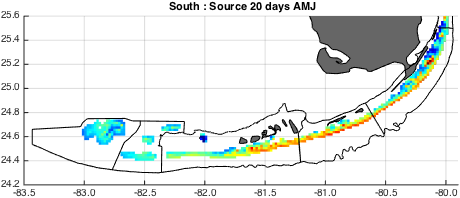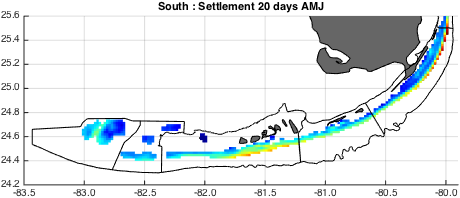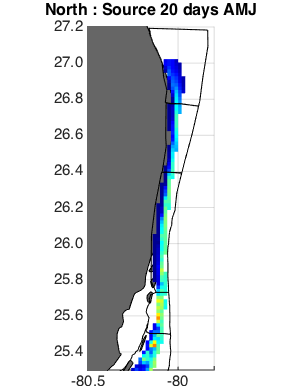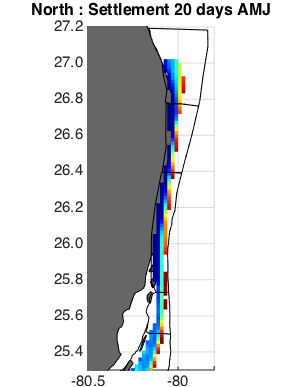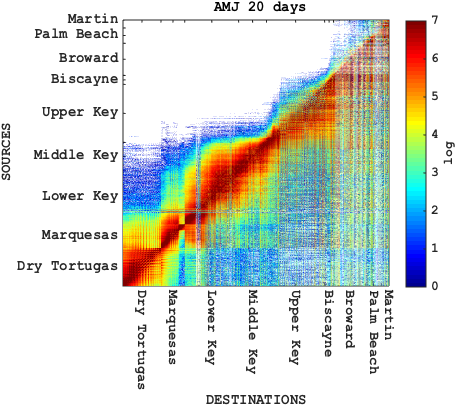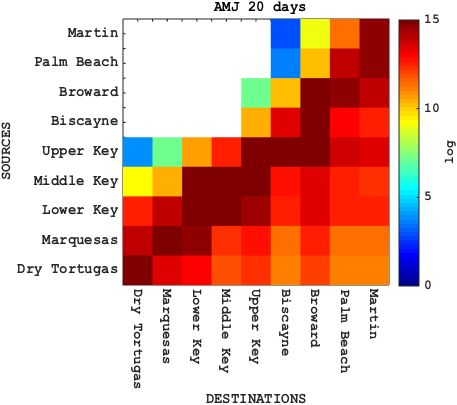(Version 1.0, experimental product, released June 2017)
| Reproductive Behavior: | |
| Pelagic Larval Duration: | |
| Larval Release Season: |
Relative connectivity importance (source and destination)
Connectivity matrix (all locations)
HTTPS Server:
Reef cell level - Brooders (264Mb), Subregion level - Brooders (25.8Kb)
Reef cell level - Spawners (264Mb), Subregion level - Spawners (25.8Kb)
FTP Server:
Reef cell level - Brooders (264Mb),
Subregion level - Brooders (25.8Kb)
Reef cell level - Spawners (264Mb),
Subregion level - Spawners (25.8Kb)
Connectivity Product Description
Potential connectivity among coral reefs in the Florida Reef Tract is determined by tracking simulated larval releases from each reef location. Modeled ocean currents were extracted from the HYbrid Coordinate Ocean Model (HYCOM) Gulf of America (GOMl0.04) output. Particle tracking was performed using the Conn4D biophysical dispersal model1. Additional parameters to the simulation modeling included bathymetry (GEBCO 2014) and reef locations data (Florida Fish and Wildlife Conservation Commission's Unified Reef Map and Millennium Coral Reef Mapping). Particle release timing was determined based on published studies2; i.e., peak reproduction of brooding corals occurs during April-June, and for broadcast spawners during July-September. For 980 reef locations across the Florida Reef Tract, product maps show the relative importance of each as a larval source and/or as a destination, at 0.02° resolution. Connectivity matrices reveal the link between each reef pair, and the strength of links is summarized for subregions.
Connectivity among coral reefs has been identified as a critically important factor in resilience, specifically in regard to recovery from disturbance. NOAA Coral Reef Watch has developed maps identifying the level of importance of specific reefs in Hawai'i and Florida for potential re-seeding of other reefs following disturbance. These Connectivity tools directly contribute to new and ongoing resilience assessments and planning of Marine Protected Areas (MPAs), MPA networks, and other conservation strategies.
1Kool JT, Paris CB, Andréfouët S, Cowen RK (2010) Complex migration and the development of genetic structure in subdivided populations: an example from Caribbean coral reef ecosystems. Ecography 33: 597-606.
2Summarized by Shearer TL, Coffroth MA (2006) Genetic identification of Caribbean scleractinian coral recruits at the Flower Garden Banks and the Florida Keys. Marine Ecology Progress Series 306: 133-142.
